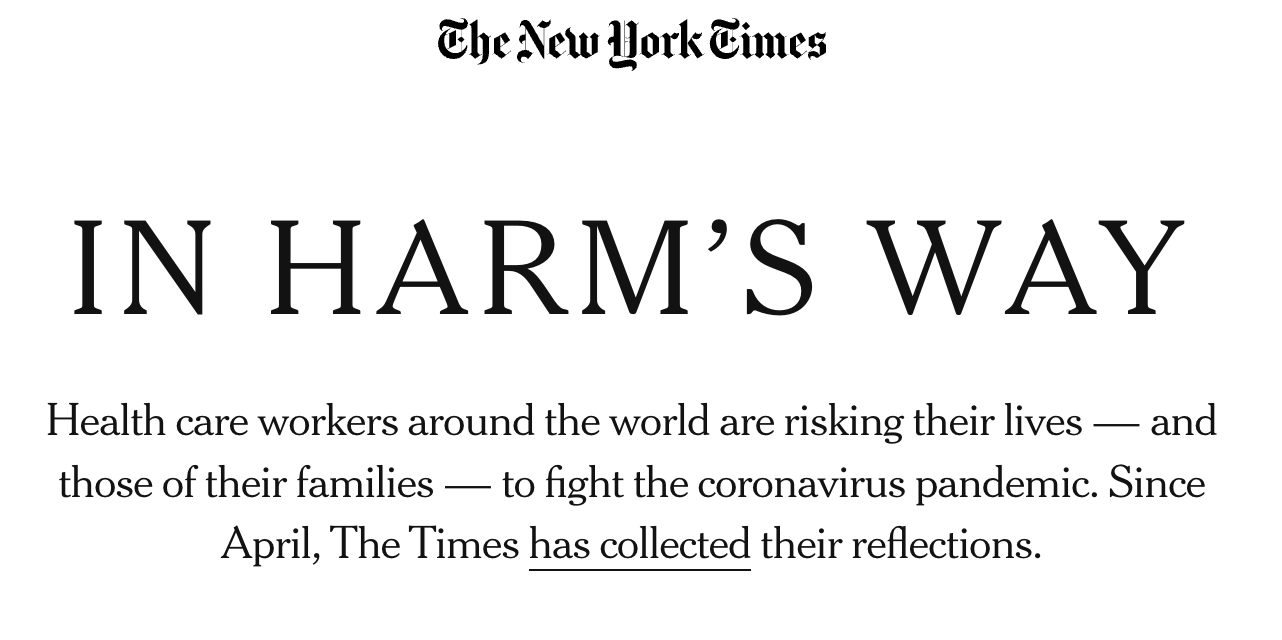Stories and Essays
-

The Sea Slug’s Improbable Lesson for Life in the Trump Era
“We habituate to the ticking of a clock, the din of a busy coffee shop, even the beating of our own noisy hearts. Amidst the assault of sensations competing for our attention, habituation helps us know what to focus on. But it can also become a liability, our brains designed to stop perceiving the familiar as a threat, even when it promises harm.”
-

The Way Hospitals Care for Incarcerated Patients Must Change
“Within the walls of a hospital, privacy is sacred—the intimate details of someone’s body and illness are meant to be as carefully guarded, as quietly delivered, as a sacramental confession. But days into my first year as a doctor, I delivered my first diagnosis of cancer in front of two armed correctional officers, to a man shackled to his bed in a hospital room that felt more like a prison cell.”
-

Inside the World-Changing History of a Tapeworm — and Why it Matters Now
"His brain appeared luminous, pale with patches of inflammation and peppered with innumerable silvery rings like the halos of so many deadly angels. The largest rings were as big as marbles while the smallest were as tiny as the point of a pencil — glowing dots speckling the gray expanse of his brain."
-

My Grandfather’s Childhood Polio Remains a Cautionary Tale Today
“By examining my grandfather’s leg, his neurologist could understand something of his story, even prophesy his future — the rural village where my grandfather grew up without an underground sanitation, where he first contracted polio as a child, and the way that, in the months to come, my grandfather’s faint cough would blossom into a painful, inexorable hack that made him afraid to eat.”
-

Wandering Gliders
“The girls, Manu knew, had been the same person until the first week was over. By then, the only evidence that they would come to exist had been a sac, a dark hollow beneath layers of muscle that curved and swelled into the shape of a ripe mango on the ultrasound screen. At two months, the ultrasound showed two flapping hearts afloat in one sac, anchored to the single placenta that lined the wall of Eve’s uterus like a dense cobweb. At three months, their umbilical cords had twined into a smooth, fishtail braid, two pulses visible in the same ropy segment, and by three-and-a-half months, the two narrow cords had become indelibly knotted into a tortuous ball, tightening and rising like a woven mound of challah bread.”
-

‘At the Very End, There is No One Else’: Saying Goodbye to Patients, Over and Over.
“We smoothed his brow with our blue-gloved hands, and then — pagers screaming — we rushed to another bedside. By the afternoon, he had died, alone. The last faces he saw were ours, half-hidden behind paper masks.”
-

The Pandemic Is Changing How We Die—And Not Just for COVID-19 Patients
“On George’s eighth day alone in the ICU, his doctors told him he had months to live.”
-

In Harm's Way
“Of all of the insidious ways Covid-19 has changed how I practice medicine, this is the one I least expected: The physical exam no longer feels like essential magic; instead, it often feels like an unmitigated risk.”
-

Algorithms of Inequality
“The virus has become a crushing reminder of the inequality of our existing healthcare system. But the current state of crisis will not last forever. At the other end of this pandemic, we will remember the irrevocable decisions we have made. We should make them with eyes wide open rather than relying unquestioningly on barely veiled proxies of inequality in deciding who should live and who should die.”
-

The Djina Disease: On Epilepsy in the Republic of Guinea
“It's the rainy season, and by the next day, Guinea is watery, sheets of rain falling from the sky and slicking the dark pavement until the ground looks bottomless. Ditches on the side of the road fill with rain, and we walk to and from the hospital balanced on a narrow curb, tightrope-walking above the ocean forming beneath us. We learn that there's a rhythm to the rain—the mornings are muggy and damp, the afternoons torrential—but still, these ditches never dry.”
-

Far, Far Away
“Here is what islanders agree on when they tell the story of Kendrick Britton: he was beautiful, tall, and wrapped in muscles he earned breaking gravel for construction projects in the days before it was imported. He never wore a shirt. There was a white streak in the front of his Afro that he hated, plucking and dying it religiously. Of all of the blue-eyed Brittons in Southwest Bay, he had the most beautiful eyes, clear and light like the reef. Most days, Kendrick would swim out from the bay, past the caye, almost to the horizon, until all you could see was a dark stain in the Caribbean. He swam like a fish.”
-

Commotio Cordis
The Bellevue Literary Review, 2013
“That month, it rained without respite for three weeks. At first, the water seemed to slick things down—rough cement and fallen leaves and tall grass laid on its side. Then, it pulled things up, out of storm drains and ditches, roiling dark with floating carrion and oily dirt and once, a neighbor swore, a live bonefish, swimming confused circles in the drowning street.”
-

Mission Improbable
“In St. George, Utah, Randen Syphus’ hometown, it hardly ever rains. But one Saturday night in July, Syphus is far from home, and as the blue Dodge Caravan he rides in sidles up to the curb, he steps out of the passenger seat to a New Haven sky heavy with rain clouds. In black suits, collared white shirts, nametags, and ties, Syphus and Chris Eyres, his companion, are strangely formal, out of place amidst the abandoned, broken-windowed industrial buildings northwest of the Yale Divinity School.”
-

Truth and Reconciliation
“In 2004, months before she was paralyzed in a car accident in Sierra Leone, Artemis Christodulou realized that everything she’d worked to collect over the past two years could disappear. All 83 pages of inmates’ essays from a Sierra Leonean prison, where many died without ever having been convicted; all 13 faces on a painting bearing a Sierra Leonean flag, looking to a future of good roads and streetlights; all of the stamps, poems, plays, and sculptures from combatants and civilians that had borne witness to the transition of a nation.”